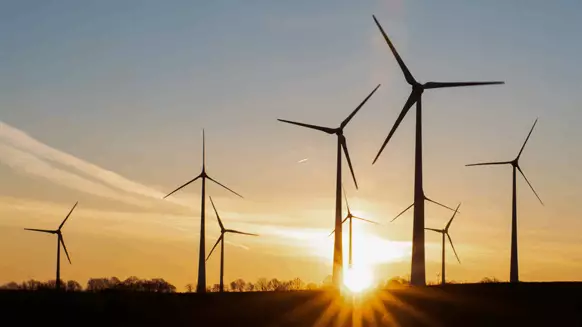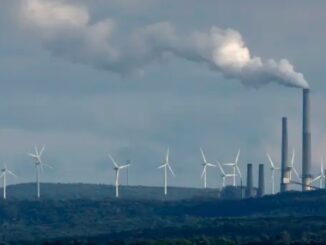
ENB Pub Note: Great article by Felicity Bradstock. Renewable energy also needs to calculate the Grid Factor of Physics. Almost double the additional kWh are required to offset renewables’ intermittent electrical deliverable capabilities. It does not seem to be calculated by anyone and is a key reason for the higher cost of electricity to consumers when renewables on placed on the grid.
General Electric (GE) plans to make major job cuts in its U.S. wind operations and will consider its other markets too as windfarms are proving to be a major expense in the wake of Covid and the Russian invasion of Ukraine. Continued supply chain disruption and the high cost of wind turbines are deterring companies from investing in wind energy, as they look for cheaper alternatives. It’s a question that has been being asked for years – are wind and solar power more expensive and less reliable? The two renewable energy sources have been repeatedly criticised for their intermittent power provision. Meanwhile, as the prices of steel and other materials continue to rise, solar and wind farms are proving to be more expensive to construct than previously hoped.
The prices of solar and wind power had been decreasing as technological innovations were made, thanks to huge amounts of investment worldwide in research and development. But in the wake of a pandemic that has wreaked havoc on global supply chains, the price of components has risen again and again. So, can the improved efficiency of wind turbine technology balance with rising material prices?
This month, reports suggested that GE would be laying off around 20 percent of its onshore wind workforce in the U.S., with employees in North America, Latin America, the Middle East, and Africa being notified of changes to the company. An assessment of its Europe and Asia wind markets is expected to follow. Last week, GE employees received a letter stating, “We are taking steps to streamline and size our onshore wind business for market realities to position us for future success. These are difficult decisions, which do not reflect on our employees’ dedication and hard work but are needed to ensure the business can compete and improve profitability over time.”
According to several sources, GE is planning to restructure and resize the business, citing weak demand, rising costs, and supply-chain delays as the primary challenges. GE confirmed it was “streamlining” its onshore wind operations, although has the firm has not commented on job cuts. A GE Renewables spokesperson stated: “These are difficult decisions, which do not reflect on our employees’ dedication and hard work but are needed to ensure the business can compete and improve profitability over time.”
This example highlights the broader challenge, as companies have been battling with the rising cost of wind power as they pump bigger investments into renewables in a bid to decarbonise operations. And wind turbine manufacturers that have seen demand soar in recent years are still struggling to turn a profit.
Even wind energy majors, such as Vestas Wind Systems, General Electric Co., and Siemens Gamesa Renewable Energy, are feeling the stress of high raw material and logistics costs as they race to build the tallest turbines. Ben Backwell, CEO of the trade group Global Wind Energy Council, explained “What I’m seeing is a colossal market failure.” He added, “The risk is we’re not on track for net zero [emissions] — and the other risk is the supply chain contracts, instead of expanding.”
The potential move away from wind power could have major consequences, as the leading non-hydro renewable energy source globally. Wind power is expected to strongly support the worldwide transition away from fossil fuels to renewable alternatives. In addition, the geopolitical landscape could change if North American and European energy companies reign in their wind power funding while Asian powers, such as China, increase their investments in wind.
Earlier this year, several Western turbine manufacturers said they were competing for fewer projects in fewer markets, with plans to raise prices, streamline their product lineups, and cut manufacturing costs to strive for profits. This comes at a time of great potential for renewable energy projects, as the world faces fossil fuel scarcity and rising energy costs. But wind turbine makers have experienced losses in 2022, with rising material costs and stiff competition in the market.
Vestas and Siemens Gamesa, which together control around 70 percent of the market outside China, reported losses for the first quarter of 2022. The CEO of Siemens Gamesa, Jochen Eickholt, said: “The competition is rather fierce and, in the past, there was an element where people wanted to gain market share at the expense of profitability too often.” The two firms have increased their prices by a double-digit percentage over the last year and have both turned down low-paying projects, taking the business in another direction. Eickholt backed the bold change in strategy, but Siemen’s order intake between January and March fell 69 percent below estimates.
For the last decade, and particularly following COP26, the future of wind power appeared to be a given. Energy companies, governments, and environmentalists had high hopes for wind power, as it continued to become bigger and better than ever. But the spillover effects of the pandemic and the invasion of Ukraine have made this outlook less certain, as companies battle with the realities of rising costs and lower profits.
By Felicity Bradstock for Oilprice.com



